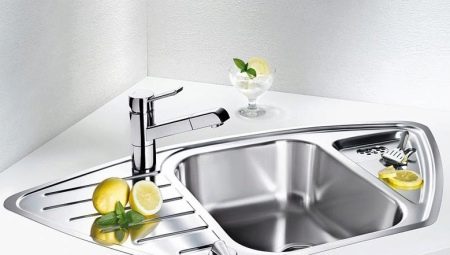Long gone are the days when they washed dishes in a basin, and in it they washed themselves. There is a sink in every home, now it carries not only its functional purpose, but also is a complete element of the interior. If there is no sink in your bathroom, then it is a must in the kitchen.
No matter how you look after your sink and clean it, sooner or later spots and limescale appear on it, which is not so easy to get rid of. But this is not scary, for each sink there are several unique methods that can give it a pristine and fresh look.
With the help of familiar household tools that are always at hand, absolutely any kitchen sink can be washed at home.
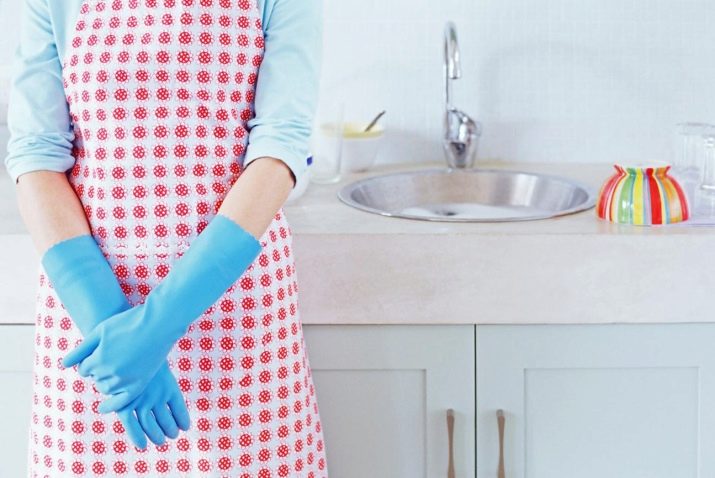
Cleaning Features
Thanks to a wide range of materials, sinks are:
- From stainless steel.
- From porcelain tile.
- From sanitary ware.
- Enamelled.
- Of artificial stone.
Therefore, for each of these materials there is a different approach to cleaning and its own materials. Find out what your sink is made of and select the right products for it. So she will again shine with purity and will serve you faithfully.
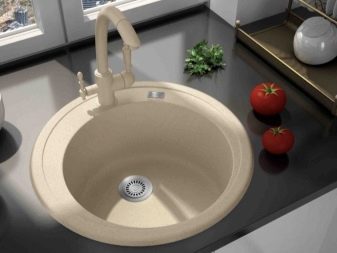

First you need to prepare:
- Remove all objects and utensils from the sink, and also clear the area around.
- Wash the sink with ordinary dishwashing detergent.
- Prepare special household gloves for yourself.
- Remove metal sponges and washcloths.
- Get ready to ventilate the room.

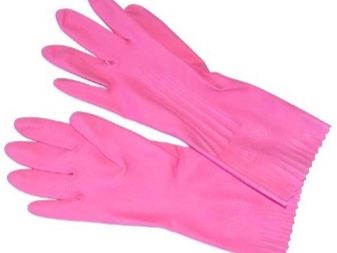
How to wipe the sink?
Stainless steel
Stainless steel is an excellent material for the manufacture of kitchen sinks. She is beautiful, comfortable and durable.Its advantage is the chrome-plated surface, which is resistant to limescale, grease and other impurities. But this is not a reason not to take care of her and let it go by its own accord. Sooner or later, a stainless steel product will take on a very scruffy look. What to do?
Removing browning is pretty easy with:
- soda;
- vinegar
- bleach;
- starch.
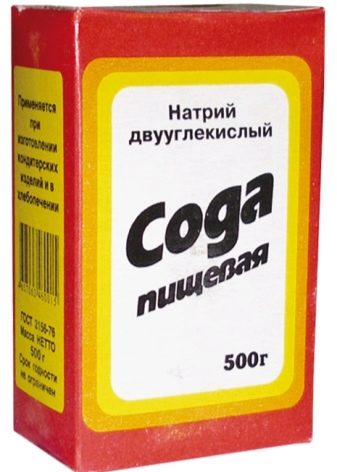
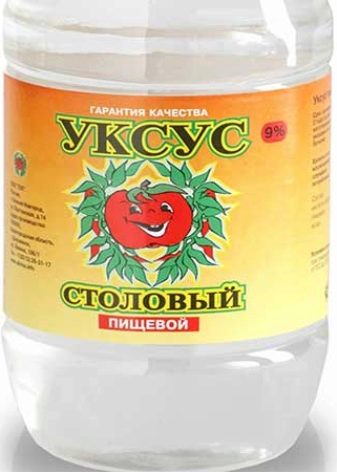
All these tools can be used both separately from each other, and together:
- Conventional chlorine-containing bleach does a great job of staining and darkening the surface of a stainless steel, but it can unevenly lighten some areas of the sink, so it is recommended to evenly treat the entire surface of the sink with vinegar, leave for 20 minutes and rinse thoroughly.
- Baking soda is also good for browning and blemishes. It must be applied to the abrasive side of the dishware sponge, add water to make slurry and thoroughly rub the surface. This is a laborious process, but quite effective. The most important thing is to thoroughly rinse the sink after all the manipulations. To clean the dirt in hard to reach places will help an old toothbrush.
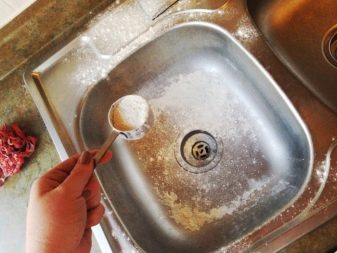
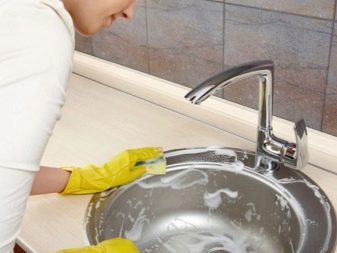
- In addition, an alternative method of cleaning can be a steam generator, for this it is necessary to set it to maximum power and steam all contaminated areas.
A powerful steam generator can cope with all contaminants without any cleaning agents.
From enamel and sanitary ware
The enameled surface is very capricious and does not tolerate abrasive sponges and detergents, since they leave tiny scratches in which dirt accumulates daily. The same goes for earthenware sinks. These types of sinks very often have an ugly yellowish coating, which spoils the entire appearance. When cleaning a ceramic sink, it is better to use mild non-abrasive detergents:
- The easiest way: to take an ordinary sponge for washing dishes and laundry soap. It is necessary to rinse the sink with warm water, soap the sponge with soap and thoroughly wipe in a circular motion the entire surface of the sink. Then rinse it with clean water.
- A familiar household cleaning method using commercially available pastes and creams for faience and enamel that does not leave scratches on the surface is also good.
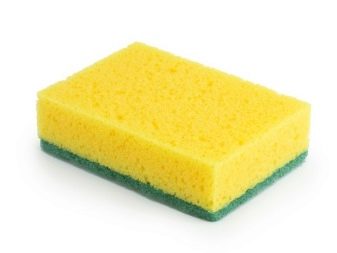
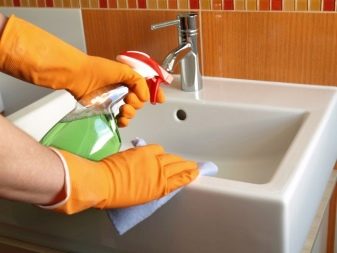
- There is a good homemade recipe for yellowness. It is necessary to prepare a solution of peroxide and ammonia. To do this, take ammonia - 100 ml and 50 ml of 3% hydrogen peroxide, carefully mix and apply to the pollution. Leave for 10-15 minutes for exposure and rinse thoroughly.
- Another no less good way. To do this, we need wine vinegar and salt. We take 100 ml of wine vinegar, put 2 tablespoons of salt in it and heat it in a water bath or in a microwave oven to a temperature of about 60 degrees. This mixture is applied to the dirt and leave for 15-20 minutes. Then rinse thoroughly and wipe dry.
- Another way is to use bleach. You need to plug the drain, fill the sink with hot water and pour at least 1 cup of chlorine bleach there. Hold for 20 minutes. Then gently open the cork and drain the contents, then rinse thoroughly.
- Using lemon. A faience sink can be easily cleaned of stains with a piece of lemon. They need to grate the dirt and then rinse with water.
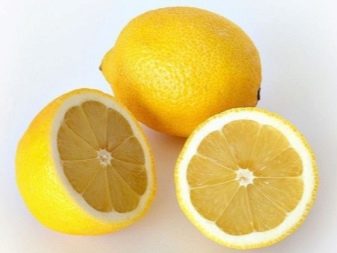
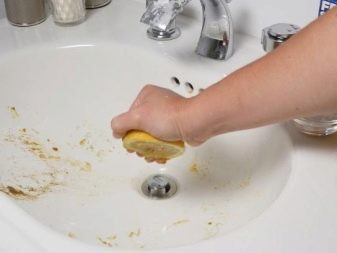
It is important to remember that for cleaning enameled sinks, it is unacceptable to use tools for cleaning toilets, acidic and alkaline compounds, which may be suitable for earthenware sinks.
From porcelain tile
Porcelain tile is a high-quality and durable material, it is resistant to acid compositions, temperature extremes, as well as mechanical stress. But, despite the excellent functional performance, this material has not only positive reviews. Water spots and a whitish coating often appear on its surface. Porcelain does not tolerate aggressive detergents, therefore it is better to use either special store mixes, or folk methods:
- The most common method for any sink is a combination of vinegar and soda, which is also suitable for porcelain stoneware sinks. To do this, apply soda to the entire surface of the sink, and slowly add vinegar to particularly contaminated places. While the reaction is between vinegar and soda, your sink is cleaned. When the hissing ends, take a soft sponge and thoroughly wipe the resulting gruel over the entire surface, then rinse with water.
- The second method is citric acid and a detergent. Take your ordinary dishwashing detergent and add citric acid to it, apply this mixture on a sponge and walk in stains and dirt in smooth circular movements. Then also rinse everything with clean water.
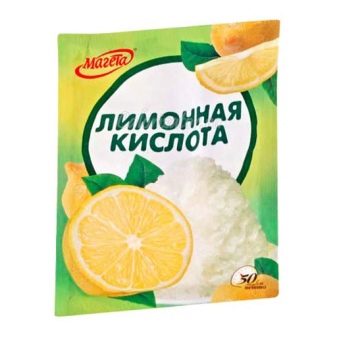
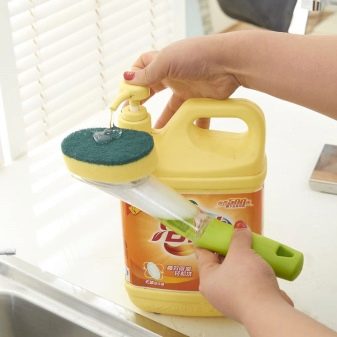
- If none of the previous methods have helped you, you can go to extreme measures. Many housewives use ordinary bleach. Just keep in mind that its contact with the surface of the sink should not be too long. After rinsing with a bleach sink, you need to quickly wipe it with a sponge, checking how the stain removal has gone and rinse immediately with plenty of clean water. After each use of the ceramic sink, wipe it dry to avoid stains.
See how to easily and simply wash a porcelain tile sink in the next video.
Made of artificial stone or composite
Composite plumbing is more and more popular. This material is beautiful, has many colors suitable for any interior, and is also so durable that some manufacturers give an almost lifetime warranty. More and more sinks are made from this material, but not everything is as simple as it seems. On products of dark colors, a whitish coating of water quickly appears, and, on the contrary, traces of tea, coffee and bright products, as well as rust, if the tap leaks slightly, remain clearly visible on light products. So how to get rid of this unpleasant yellowness?
First you need to consider that a stone sink cannot be washed with products containing:
- acetone;
- acid and alkali;
- solvents.
And also do not use metal washcloths, sponges and brushes, abrasive pastes and powders.
In addition, this material does not tolerate boiling water. Do not pour boiling water into such a sink or try to wash it with it.
A sink made of light artificial stone can be well cleaned with chlorine-based household products such as "Domestos." In addition, popular melamine sponges are well suited, they do an excellent job of removing any stains from surfaces.

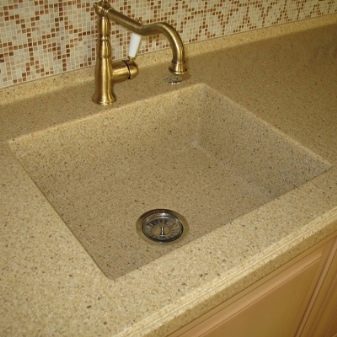
Consider folk methods:
- For cleaning with chlorine, you will have to close the drain with a stopper and fill the sink with warm water with diluted chlorine, in a ratio of 3: 1. Wait 15 minutes and drain the solution. Then rinse thoroughly.
- Using soda. It is necessary to mix warm water with baking soda to a pulp state and clean the dirt with a soft sponge or cloth with this mixture.
- Using soda. This requires drinks such as Coca-Cola or Pepsi. Due to the acid contained in them, they are able to clean off rust spots and limescale.
- With the help of mustard. To do this, take dry mustard powder and dilute it in water to the state of slurry and apply with a soft sponge, brush or brush to the places of contamination. Then rub a little and rinse with water. After all the manipulations, it is important to wipe the composite sink dry.
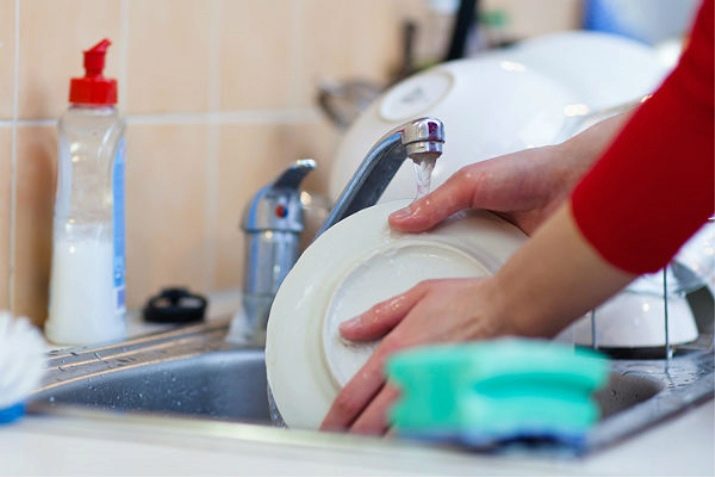
Whatever your sink is made of, it is advisable not only to clean it periodically, but also to regularly look after it, for this it is necessary:
- Keep it clean daily and do not leave unwashed dishes at night.
- When pouring tea or coffee, immediately rinse the sink thoroughly with clean water.
- Rinse the sink with regular detergent after each dishwashing.
- Be sure to wipe the sink dry after use.
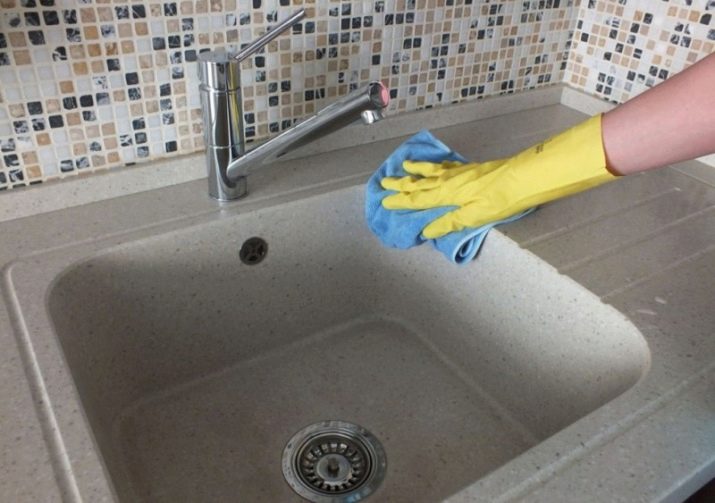
These simple rules will allow you to keep a clean appearance of the sink for a long time and avoid complex cleaning procedures.
